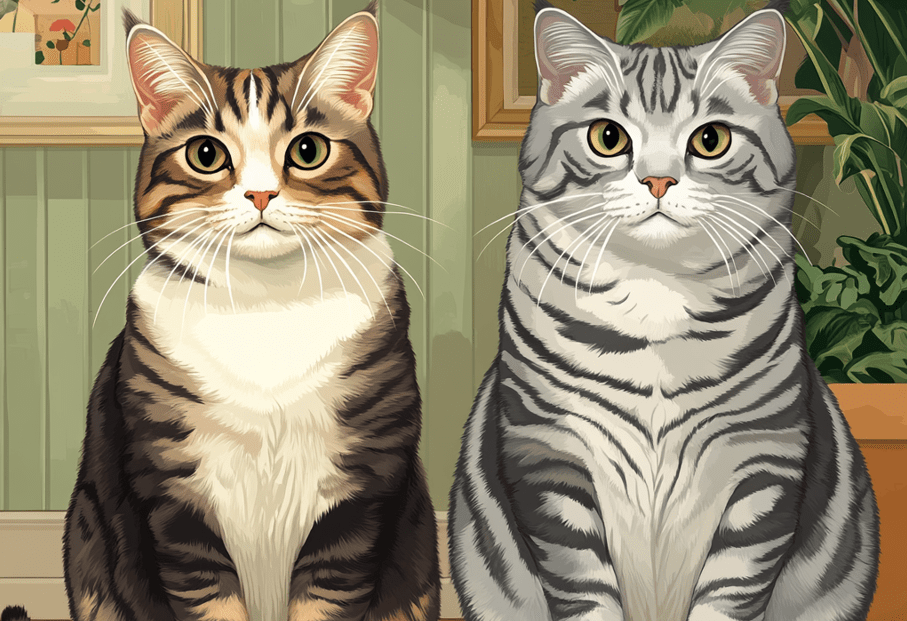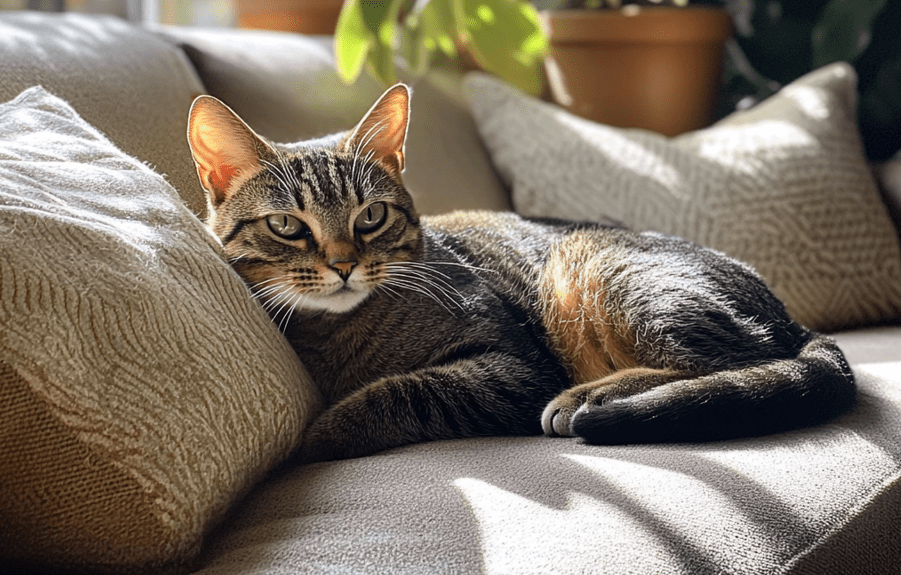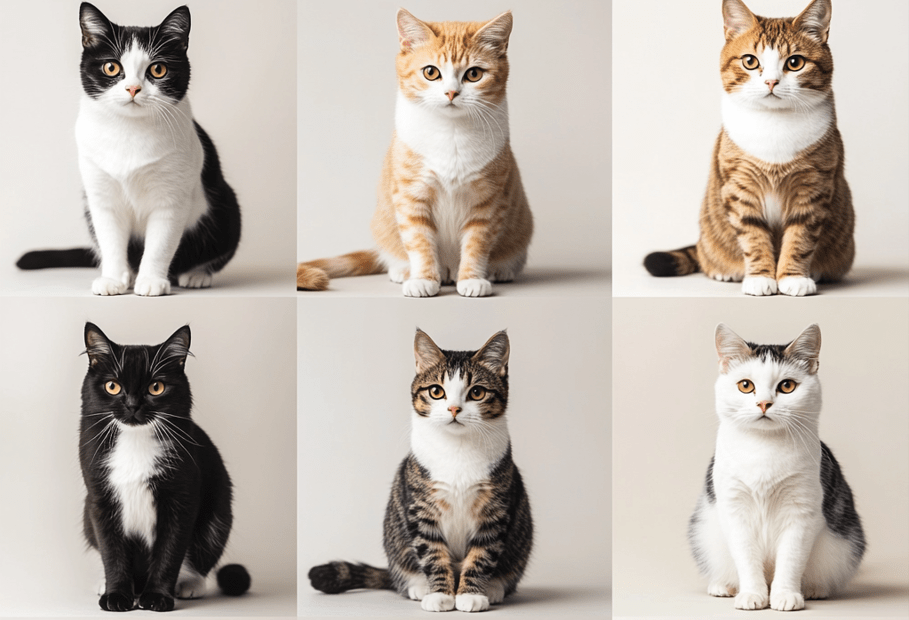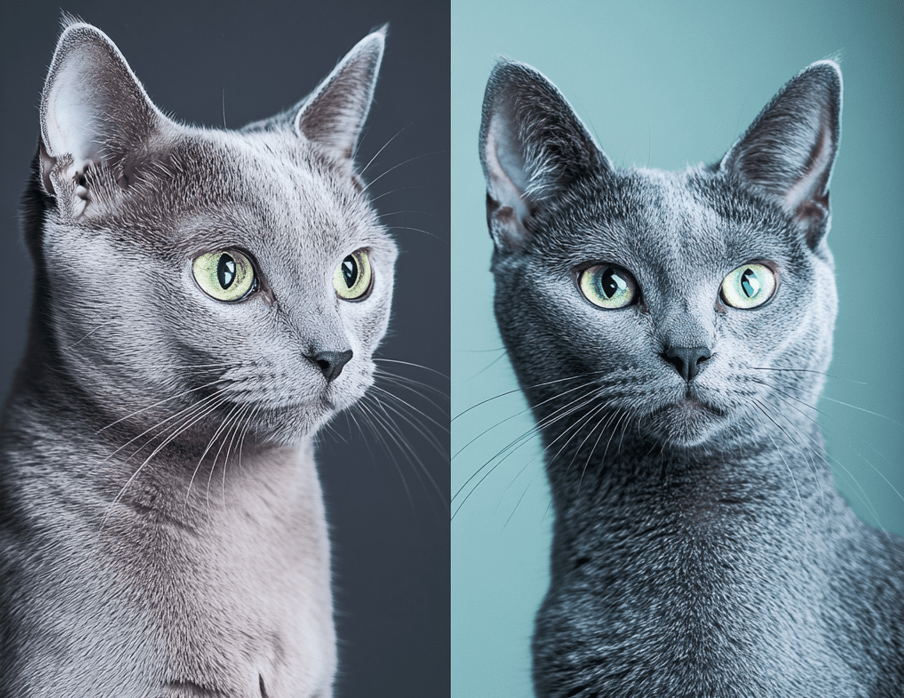
If you’re a proud owner of a Domestic Shorthair cat, you know these felines are cherished for their vibrant personalities and sleek, short coats. However, grooming a Domestic Shorthair with sensitive skin requires extra care to prevent irritation, discomfort, or allergic reactions. Choosing the right grooming tools for Domestic Shorthairs can make all the difference in maintaining their coat health while keeping their skin happy. This comprehensive guide explores the best grooming tools tailored for Domestic Shorthairs with sensitive skin, offering insights, product recommendations, and tips to ensure a stress-free grooming experience.
Why Grooming Matters for Domestic Shorthairs with Sensitive Skin
Domestic Shorthair cats are a diverse breed with short, dense coats that shed moderately year-round, with heavier shedding during spring and fall. Regular grooming is essential to remove loose fur, prevent matting, and reduce hairballs, which are common in this breed. For Domestic Shorthairs with sensitive skin, grooming serves additional purposes:
Reduces Irritation: Sensitive skin is prone to redness, itching, or flaking caused by trapped dander, dirt, or allergens. Proper grooming tools help clean the coat gently without aggravating the skin.
Promotes Skin Health: Grooming distributes natural oils, keeping the coat shiny and the skin moisturized, which is especially important for cats prone to dryness.
Prevents Allergic Reactions: Cats with sensitive skin may react to harsh grooming tools or improper techniques, leading to discomfort or hotspots.
Minimizes Shedding: Effective grooming reduces loose fur, which can irritate sensitive skin if left on the coat or in the environment.
Choosing grooming tools designed for sensitive skin ensures your Domestic Shorthair remains comfortable while looking their best.
Understanding Sensitive Skin in Domestic Shorthairs
Sensitive skin in Domestic Shorthairs can manifest as redness, itching, flaking, or excessive grooming due to irritation. Common causes include:
Allergies: Food, environmental allergens (e.g., pollen, dust), or flea bites can trigger skin sensitivity.
Dry Skin: Lack of humidity or poor diet can lead to flaky, irritated skin.
Over-Grooming: Stress or allergies may cause your cat to over-groom, worsening skin irritation.
Harsh Grooming Tools: Brushes with sharp bristles or aggressive deshedding tools can scratch or inflame sensitive skin.
When selecting grooming tools, prioritize those with soft, gentle materials and ergonomic designs to minimize discomfort and promote a positive grooming experience.
Top Grooming Tools for Domestic Shorthairs with Sensitive Skin
Below is a curated list of the best grooming tools for Domestic Shorthairs with sensitive skin, including brushes, combs, gloves, and bathing tools. Each recommendation is chosen for its gentle design, effectiveness, and suitability for this breed’s unique needs.
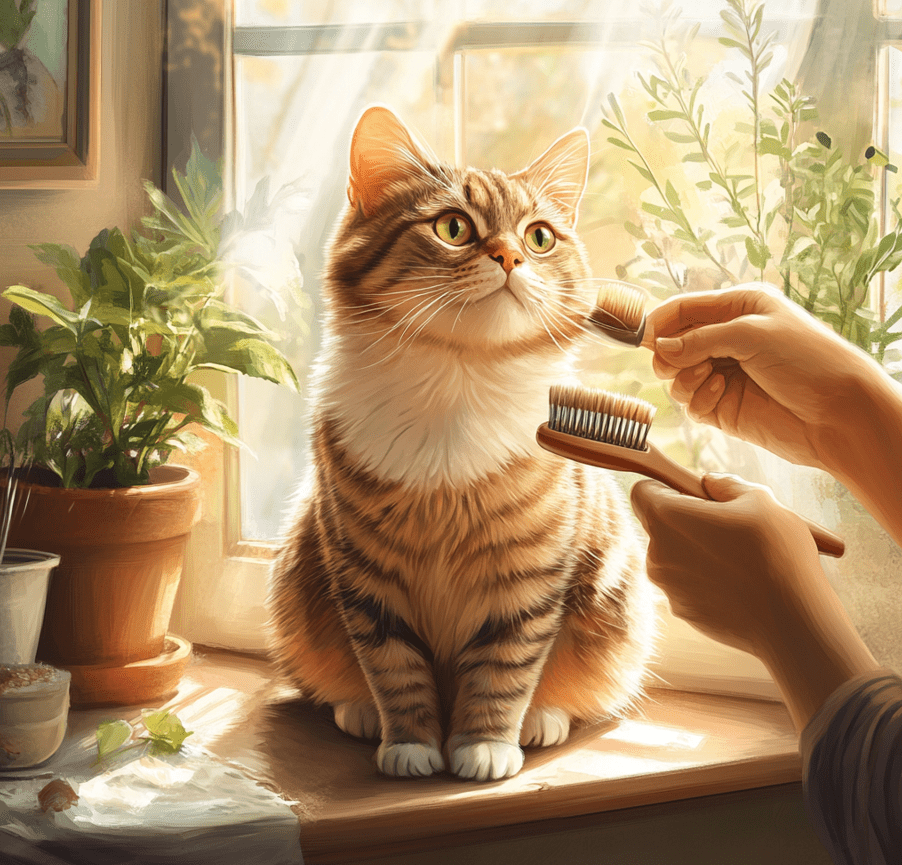
1. Soft Bristle Brushes
Soft bristle brushes are ideal for Domestic Shorthairs with sensitive skin, as they gently remove loose fur and debris without scratching the skin. These brushes are perfect for daily grooming to maintain coat health.
Recommended Product: Safari Soft Bristle Brush
Features: Flexible, soft nylon bristles that glide smoothly through short coats, ergonomic handle for easy use, and a lightweight design.
Why It’s Great for Sensitive Skin: The soft bristles massage the skin without causing irritation, promoting natural oil distribution.
How to Use: Brush gently in the direction of hair growth for 5–10 minutes daily to remove loose fur and stimulate the skin.
Alternative: Hertzko Soft Pet Brush
Features: Ultra-soft bristles with rounded tips and a non-slip grip.
Why It’s Great: Designed for sensitive-skinned pets, it minimizes pulling and tugging.
Tips:
-
Avoid pressing too hard to prevent skin irritation.
-
Clean the brush after each use to remove trapped dander or allergens.
2. Rubber Grooming Brushes
Rubber brushes are excellent for sensitive-skinned Domestic Shorthairs, as they provide a gentle massage while removing loose fur. They’re also versatile for both wet and dry grooming.
Recommended Product: Kong ZoomGroom
Features: Soft, flexible rubber nubs that attract loose fur like a magnet, available in a cat-specific size.
Why It’s Great for Sensitive Skin: The rubber nubs are non-abrasive, making them safe for daily use on sensitive skin.
How to Use: Use circular motions to massage the coat, focusing on areas with heavy shedding (e.g., back and sides). Rinse the brush to clean.
Alternative: JW Pet GripSoft Rubber Brush
Features: Ergonomic handle and soft rubber tips for gentle grooming.
Why It’s Great: Ideal for cats that dislike traditional brushes, as it feels like a soothing massage.
Tips:
-
Use during bath time to distribute shampoo and remove loose fur.
-
Check for skin redness after grooming to ensure the tool isn’t too firm for your cat.
3. Grooming Gloves
Grooming gloves are a fantastic option for Domestic Shorthairs with sensitive skin, especially for cats that are nervous about brushes. They mimic the feel of petting, making grooming a bonding experience.
Recommended Product: HandsOn All-in-One Pet Grooming Gloves
Features: Soft rubber nodules on palms and fingers, adjustable wrist straps, and water-resistant material.
Why It’s Great for Sensitive Skin: The gentle nodules remove loose fur without pulling, and the petting motion reduces stress.
How to Use: Pet your cat as you normally would, focusing on shedding-prone areas. Peel off collected fur for easy cleanup.
Alternative: Pet Thunder Grooming Gloves
Features: Extra-soft silicone tips and breathable mesh fabric.
Why It’s Great: Lightweight and comfortable for both you and your cat.
Tips:
-
Start with short sessions to help your cat adjust to the sensation.
-
Use gloves to check for skin abnormalities, like lumps or sores, during grooming.
4. Fine-Tooth Combs for Flea and Dander Control
Fine-tooth combs are essential for removing fleas, dander, and small debris that can irritate sensitive skin. They’re also useful for detangling minor mats in Domestic Shorthairs.

Recommended Product:Safari Flea Comb
Features: Closely spaced stainless steel teeth, ergonomic handle, and durable design.
Why It’s Great for Sensitive Skin: The smooth teeth glide through the coat without tugging, effectively removing allergens and parasites.
How to Use: Comb gently through the coat, focusing on areas like the neck, base of the tail, and belly. Check the comb for fleas or debris after each pass.
Alternative: Hartz Groomer’s Best Flea Comb
Features: Extra-fine teeth and a comfortable grip.
Why It’s Great: Affordable and effective for sensitive-skinned cats.
Tips:
-
Use a flea comb weekly, even if your cat is on flea prevention, to catch stray parasites.
-
Soak the comb in soapy water after use to kill fleas and clean debris.
5. Deshedding Tools (Gentle Options)
While deshedding tools are effective for reducing shedding, they must be used cautiously on Domestic Shorthairs with sensitive skin to avoid irritation. Opt for tools with rounded, non-sharp edges.
Recommended Product: Furminator Undercoat Deshedding Tool (Small Cat Version)
Features: Stainless steel edge with skin-guard technology, ergonomic handle, and a fur-ejector button.
Why It’s Great for Sensitive Skin: The skin-guard prevents digging into the skin, and the gentle edge removes loose undercoat without irritation.
How to Use: Use once or twice a week for 5–10 minutes, applying light pressure in the direction of hair growth.
Alternative: Pet Neat Deshedding Brush
Features: Rounded stainless steel teeth and a detachable comb for easy cleaning.
Why It’s Great: Affordable and designed to minimize skin contact.
Tips:
-
Avoid overuse, as excessive deshedding can irritate sensitive skin.
-
Stop immediately if your cat shows signs of discomfort, such as twitching or vocalizing.
6. Hypoallergenic Shampoos and Wipes
Bathing is less frequent for Domestic Shorthairs, but cats with sensitive skin benefit from hypoallergenic shampoos or grooming wipes to remove allergens and soothe irritation.
Recommended Product: Veterinary Formula Clinical Care Hypoallergenic Shampoo
Features: Fragrance-free, dye-free formula with aloe vera and vitamin E.
Why It’s Great for Sensitive Skin: Gently cleanses without stripping natural oils, reducing itching and flaking.
How to Use: Wet your cat’s coat, apply a small amount of shampoo, lather, and rinse thoroughly. Use every 4–6 weeks or as needed.
Alternative: Burt’s Bees Hypoallergenic Cat Wipes
Features: pH-balanced, fragrance-free wipes with shea butter and aloe.
Why It’s Great: Perfect for spot-cleaning or cats that dislike baths.
Tips:
-
Test a small patch of skin before using a new shampoo to ensure no allergic reactions.
-
Use lukewarm water and dry your cat thoroughly to prevent skin irritation.
7. Nail Clippers for Safe Trimming
Regular nail trimming prevents overgrowth, which can lead to scratching and skin irritation in sensitive Domestic Shorthairs. Choose clippers designed for small pets to ensure safety.
Recommended Product: Millers Forge Stainless Steel Cat Nail Clipper
Features: Sharp stainless steel blades, non-slip handles, and a safety stop.
Why It’s Great for Sensitive Skin: Precise cutting reduces the risk of nicking the quick, which can cause pain and stress.
How to Use: Trim only the tip of each nail every 2–4 weeks, avoiding the pink quick.
Alternative: Safari Professional Nail Trimmer
Features: Rounded blade edges and a comfortable grip.
Why It’s Great: Easy to use for beginners and safe for sensitive cats.
Tips:
-
Trim nails in a calm environment to reduce stress.
-
Reward your cat with treats to create a positive association with nail clipping.
How to Groom a Domestic Shorthair with Sensitive Skin
Grooming a Domestic Shorthair with sensitive skin requires a gentle approach and attention to your cat’s comfort. Follow these steps for a successful grooming session:
Create a Calm Environment: Choose a quiet, familiar space with minimal distractions. Place a non-slip mat or towel on the grooming surface for stability.
Start with Petting: Begin by petting your cat to relax them. If using grooming gloves, this can double as the initial grooming step.
Brush Gently: Use a soft bristle brush or rubber brush to remove loose fur. Work in small sections, brushing in the direction of hair growth. Check for skin redness or irritation as you go.
Comb for Fleas or Mats: Use a fine-tooth comb to check for fleas or minor tangles, focusing on sensitive areas like the belly and armpits.
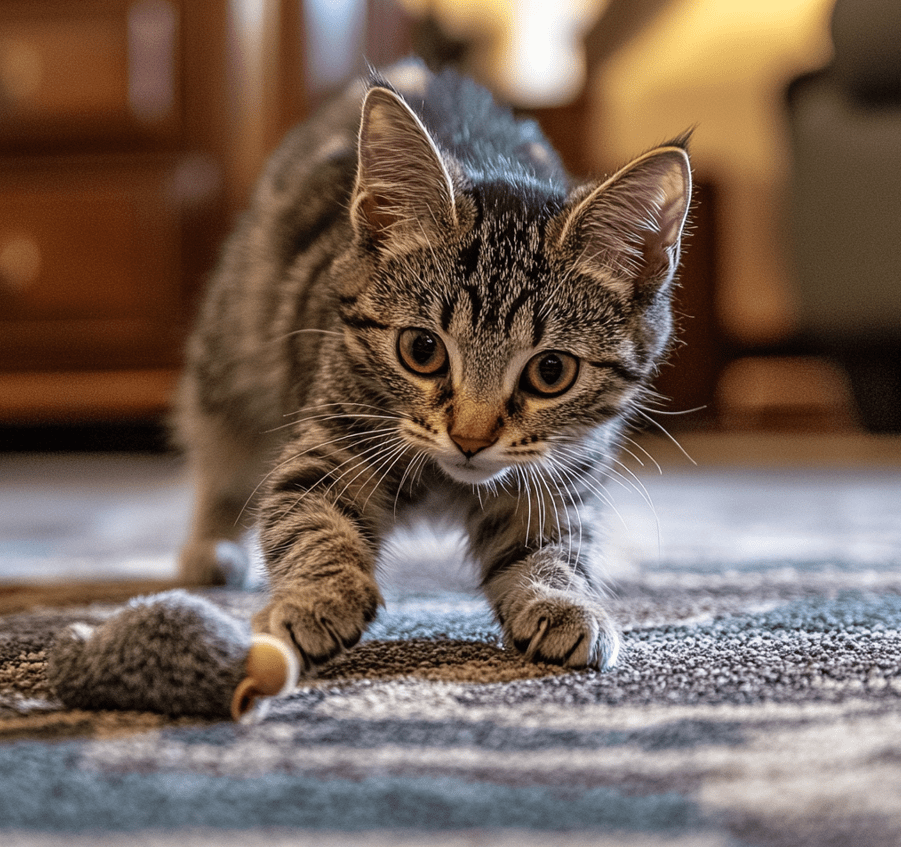
Deshed Sparingly: If using a deshedding tool, limit sessions to once a week and apply light pressure to avoid irritating the skin.
Spot-Clean or Bathe (If Needed): Use hypoallergenic wipes for quick cleanups or a gentle shampoo for baths. Rinse thoroughly and dry your cat with a soft towel.
Trim Nails: If necessary, trim nails carefully, rewarding your cat afterward.
Monitor Skin Health: After grooming, check for signs of irritation, such as redness, scratching, or bald spots. Consult a vet if you notice abnormalities.
Tips for Success:
-
Keep sessions short (5–15 minutes) to avoid stressing your cat.
-
Use treats or praise to reinforce positive behavior.
-
Stop immediately if your cat shows signs of discomfort or aggression.
Choosing the Right Grooming Tools: Key Considerations
When selecting grooming tools for your Domestic Shorthair with sensitive skin, keep these factors in mind:
Material Quality: Opt for tools with soft, non-abrasive materials (e.g., rubber, nylon, or rounded stainless steel) to prevent scratching.
Ergonomic Design: Choose tools with comfortable handles to maintain control and reduce strain during grooming.
Ease of Cleaning: Tools that are easy to clean (e.g., detachable combs or washable gloves) help maintain hygiene and prevent allergen buildup.
Cat Comfort: Prioritize tools that mimic petting or massage to keep your cat relaxed.
Safety Features: Look for rounded edges, skin guards, or safety stops to minimize the risk of injury.
Preventing Skin Irritation During Grooming
To keep your Domestic Shorthair’s sensitive skin healthy, follow these preventive measures:
Groom Regularly: Brush 2–3 times a week to prevent matting and reduce allergen buildup.
Check for Allergies: Work with your vet to identify and manage food or environmental allergies that may contribute to skin sensitivity.
Maintain a Balanced Diet: Feed a high-quality cat food rich in omega-3 fatty acids to support skin and coat health.
Control Fleas: Use vet-recommended flea prevention to avoid bites that irritate sensitive skin.
Avoid Over-Bathing: Limit baths to every 4–6 weeks to prevent drying out the skin.
Monitor Stress: Minimize environmental stressors (e.g., loud noises or sudden changes) that can lead to over-grooming and skin irritation.
When to Consult a Veterinarian
While the right grooming tools can significantly improve your Domestic Shorthair’s skin health, persistent skin issues may require veterinary attention. Contact your vet if you notice:
-
Excessive scratching, licking, or chewing
-
Redness, swelling, or hotspots
-
Bald patches or thinning fur
-
Flaking, scabbing, or unusual odors
-
Behavioral changes, such as lethargy or aggression during grooming
Your veterinarian may recommend diagnostic tests (e.g., skin scrapings or allergy testing) or treatments like medicated shampoos, antihistamines, or dietary changes.
Conclusion
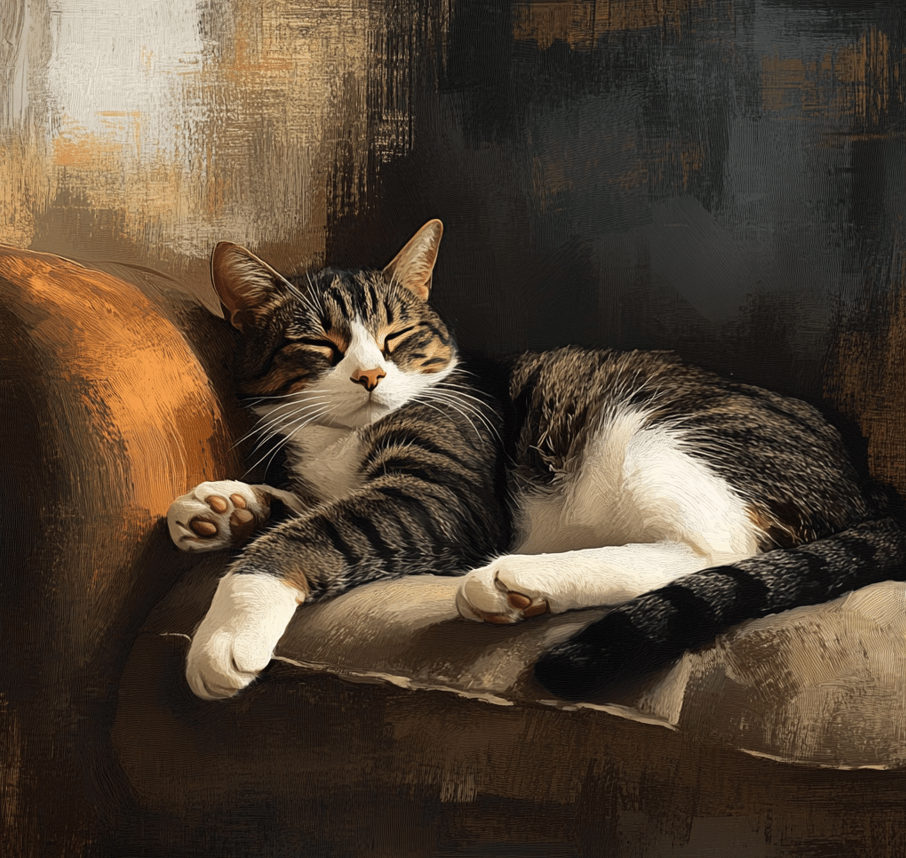
Grooming your Domestic Shorthair cat with sensitive skin doesn’t have to be a challenge with the right tools and techniques. By choosing gentle, high-quality grooming tools like soft bristle brushes, rubber brushes, grooming gloves, and hypoallergenic shampoos, you can keep your cat’s coat healthy and their skin irritation-free. Regular grooming, combined with a balanced diet and proper flea control, will ensure your Domestic Shorthair stays comfortable and happy. If skin issues persist, consult your veterinarian for tailored advice. With the right approach, grooming can become a bonding experience that enhances your cat’s well-being and keeps them purring with contentment.

